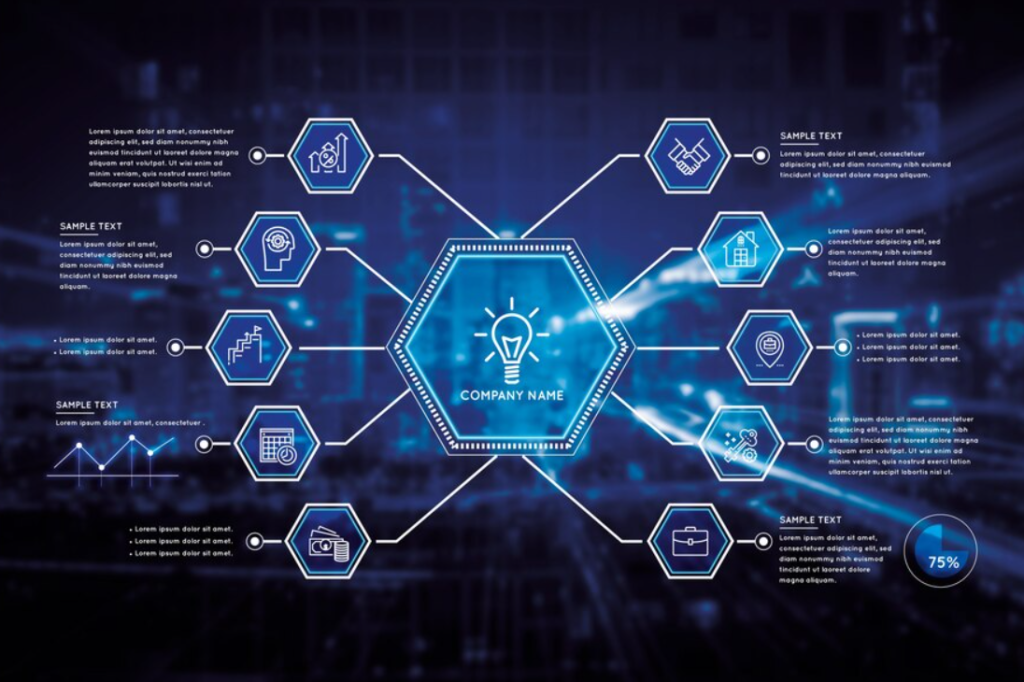Top 8 Technology Trends, a powerful convergence of disruptive forces will reshape the business environment in 2024. Hidden efficiencies will be unlocked by generative AI’s creative power and problem-solving ability. Sustainability is no longer just a catchphrase; it will become a strategic requirement, especially when developing AI models. Furthermore, once-science fiction quantum computing will unlock previously unthinkable possibilities.
To find out more about the key trends to watch in 2024. Technology Magazine speaks with top executives from tech companies.
1: AI will become the main focus and transition from theory to the real world.
The GenAI conversation is expected to transition from theory to practice. With changes from training infrastructure and cost to inference and operating costs. According to John Roese, Global Chief Technology Officer of Dell Technologies.
“There are very few real-world, scaled GenAI activities. Despite the incredibly creative ideas that GenAI has sparked about how it will transform business and the world.” As 2024 approaches, the initial wave of GenAI enterprise projects will mature to the point where significant aspects of the technology that were not previously known will become apparent,” he predicted.

2. The Technology Trends merging of security and IT departments
Zeki Turedi, CTO Europe at CrowdStrike, projects that when new threats surface in 2024. Erasing the distinctions between IT and security responsibilities, there will be a chance to improve organisational resilience by merging IT and security teams within businesses.
These teams, which have historically worked in isolated silos, are finding that their goals and day-to-day tasks are becoming more and more integrated. The quick development of technology and the changing nature of security threats that directly affect IT infrastructure are the two main forces behind this change.
Because singular threats now simultaneously target infrastructure and security, necessitating a coordinated response, this convergence is especially pertinent and necessary. These formerly disparate teams can pool their knowledge to strengthen defences against complex cyberattacks. By encouraging closer cooperation and sharing platforms and technologies. The emergence of novel cybersecurity platforms designed exclusively for IT teams serves as evidence of this pattern. These platforms are made to work in unison with IT operations. Offering automated security incident responses and real-time insights to shorten response times while strengthening overall security posture.
3. Technology Trends: A strong, real-time ecosystem will be propelled by hyperscalers.
Generative AI has frequently faced criticism for using historical data to achieve crucial outcomes. Rodrigo Liang, CEO of SambaNova Systems, believes that hyperscalers and AI models working together will transform data analytics as a whole. Matching current data with real-time fine tuning and resulting in notable speed, accuracy, and cost savings.
“Real-time fine-tuning will become more prevalent, enabling models to adjust and comprehend existing data. Thereby propelling advancements in AI applications across all industries,” the expert predicts. “A powerful ecosystem will be created by the combination of advanced chips and hyperscale data capabilities. Allowing the development of very large Composition of Experts models to address even more complex use. Cases than what we’ve even begun to see today in industries like banking, healthcare, marketing, advertising, and more.”
4. A renewed emphasis on zero-trust frameworks
People depend more than ever on a variety of devices, apps, and services in today’s hybrid work environment. Many of which are hosted in the cloud on servers that are physically uncontrolled by corporate IT. A zero-trust model is necessary in this new environment.
Chris Peake, CISO and SVP of Security at Smartsheet, believes that more layers will be added to models by organisations in the upcoming year. “Technology Trends”
Role-based security, for instance, enables organisations to designate roles for various user types and control access in accordance with those roles, according to the speaker. By doing this. They will be able to safeguard confidential data while lowering the obstacles that prevent authorised users from accessing it. In order to control user access to information based on the duration of a project, organisations can also incorporate time-based access.
Furthermore, generative AI has enormous potential to improve data security and provide an additional layer of defence. Intelligent systems must assume the responsibility of monitoring the vast amount of data that flows through a business, as humans are unable to do so. Machine learning has the capacity to “understand” normalcy and identify anomalies.
5: Business outcomes will be the primary focus of IT spending more than ever.
In light of a changing macroeconomic and competitive environment, Linda Yao, Chief Operating Officer and Head of Strategy. At Lenovo Solutions & Services Group, believes that companies will be more concerned with getting more value out of their IT investments.
“First, they will expect greater operational flexibility so that their investments grow in line with the value they generate,” the source states. “They’ll want greater predictability from their cash flows. Which could be achieved by implementing technology in a way that facilitates predictable cash flow payments or by using it to stabilise revenue growth or save expenses.
Businesses will also be concerned with making sure that IT investments either directly support or stimulate business results. Customers will use IT more frequently if it helps them achieve their desired business outcomes. Whether those be top line, bottom line, achieving particular customer experience goals, sustainability, throughput, customer acquisition, or other metrics. Instead of deploying and maintaining technology in a vacuum, more businesses will link their adoption to these metrics.
As a result, in the next five to ten years, as customers modernise or completely redesign their IT stacks. IT spending on legacy infrastructure will change to spending on next-generation technology and increase quickly. This entails swapping out traditional software licences for highly customised tech on demand. Adopting more virtualized and networked IT environments, and switching from legacy IT systems to hybrid clouds.

6: Quantum advancement, but not quantum leaps
Even before it is standardised, post-quantum cryptography (PQC), a software-based method that functions with conventional systems to safeguard data from upcoming quantum attacks. Will be widely used in 2024, predicts Liz Centoni, Executive Vice President, Chief Strategy Officer, and General Manager, Applications at Cisco.
“PQC will be incorporated into browsers, operating systems, and libraries, and creative people will try incorporating it into the protocols that control traditional cryptography, like SSL/TLS 1.3. As businesses strive to guarantee data security in the post-quantum era, PQC will also begin to permeate their operations.
“An additional trend is the increasing significance of quantum networking, which in four or five years, maybe even longer. Will allow quantum computers to interact and cooperate to produce more scalable quantum solutions. Information transmission via quantum networking will make use of quantum phenomena like superposition and entanglement. Quantum KDD (QKD) will make use of quantum networking, either in addition to or as a substitute for PQC, based on the required level of security and performance. The financial services and government. Which have strict requirements for processing and security of data, will invest heavily in quantum networking research.
7. Human abilities will be necessary for the adoption of AI (Technology Trends)
The bulk of CX interactions still need some kind of human intervention, according to NTT’s 2023 Global CX Report, and executives concur that this will continue to be an essential component of customer journeys. According to Sashen Naidu, Vice President of CX Services at NTT Ltd. The human element will be crucial to the success of AI in CX delivery. Even though four out of five organisations plan to implement it within the next year.
As businesses focus on how automation can enhance and supplement human capabilities. They will prioritise addressing the growing skills shortage that will hinder the advancement of artificial intelligence. The majority of jobs across industries will require a foundational understanding of AI and big data analytics, but there will be other options besides hiring new employees.
Business executives are more likely to have witnessed profitability of more than 25% over the previous three years as a result of investments made in reskilling and upskilling initiatives, according to research by NTT DATA. This will go on through 2024, with more carefully chosen educational opportunities to fill in skill gaps and satisfy employer demands.
8: The prevalence of social engineering attacks is still rising.
Identity-based attacks, according to Turedi of Crowdstrike, will remain the primary tool used by threat actors in 2024 for the straightforward reason that they are still a very effective tactic.
Technology Trends: 80% of breaches are caused by compromised identities, according to CrowdStrike’s most recent Threat Hunting Report. Instead of depending only on legitimate credentials that have been compromised. Adversaries have enhanced their phishing and social engineering techniques and exploited. All available means of identification and authorisation, even if they are just weak credentials obtained from the dark web.
The salient feature here is social engineering, as companies work to teach their staff how to spot deception in common ways. Identity protection is therefore the most important security that businesses should focus on enhancing in 2024. In the absence of this, enemies will consistently try to exploit this vulnerability, and they almost certainly will. This jeopardises not just the business’s confidential data but also its overall performance and reputation.

Leave a Reply